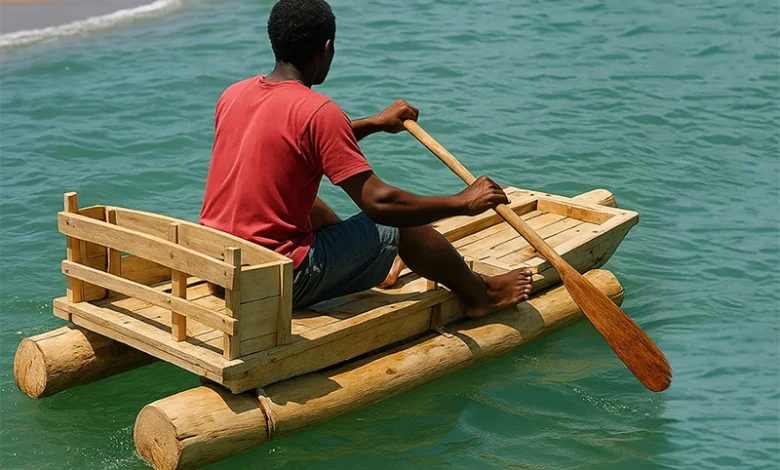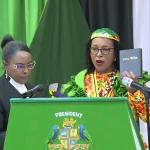Pwipwi Raft – Kalinago Craft

The Pwipwi is a handcrafted raft traditionally used by fisherfolk along Dominica’s east coast. It represents a fusion of Kalinago craftsmanship and rural fishing traditions, making it an enduring symbol of Dominica’s maritime heritage. Though simple in form, its sturdy design reflects the island’s intimate bond with its waterways.
Cultural Origins and Etymology
The word “Pwipwi” comes from the Kalinago term “piperie,” which was later adopted into Kwéyòl (Creole). This linguistic evolution symbolizes the fusion of indigenous and Afro-Caribbean traditions that characterize Dominica’s cultural heritage. Historically, the Pwipwi was more than just a fishing raft—it was also a means of transport, trade, and community bonding, especially in rural and coastal communities.
Materials and Construction
Traditional Pwipwis are made using buoyant local wood, particularly bwa flo (Ochroma pyramidale) and bwa canon (Cecropia schreberiana). Fisherfolk craft these rafts without nails, instead using hardwood pegs inserted into pre-drilled holes, secured with wooden wedges. The build reflects generations of knowledge-sharing and craftsmanship, often passed down through family lines.
Depending on the region and intended use, Pwipwis vary in design:
- Basic style: No sides or flooring—ideal for shallow rivers or quick fishing trips.
- Enhanced version: Features wooden planks or plywood floors and bòdaj (Kwéyòl for sides) for extra support and stability in rougher waters.
- Multi-purpose rafts: Used for both fishing and leisure—especially among younger villagers during river festivities.
Use in Daily Life
The Pwipwi is especially popular in communities like Sineku, Castle Bruce, and Grand Fond, where artisanal fishing traditions remain strong. It is used for:
- Nearshore line fishing and trapping
- Navigating rivers and estuaries
- Transporting small goods or nets
- Recreational paddling by local youth
These rafts remain favored for their lightness, ease of maneuverability, and low cost compared to fiberglass boats. Some Pwipwis are now modernized with bits of plastic or recycled parts, though the traditional form remains alive in many villages.
Cultural Significance and Preservation
As a living tradition, the Pwipwi symbolizes sustainability, adaptation, and heritage. It’s still celebrated during fishing festivals and community demonstrations and is increasingly recognized by cultural preservation groups that aim to pass on traditional skills to younger generations. Amid Dominica’s push for resilience and local pride, the Pwipwi remains a floating testament to ancestral ingenuity.




